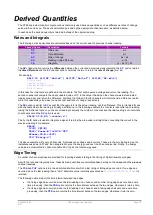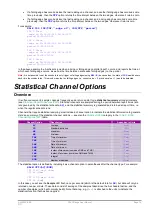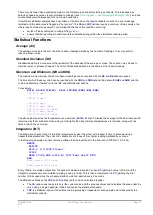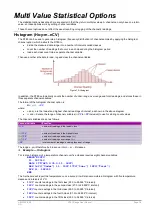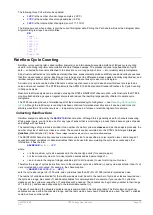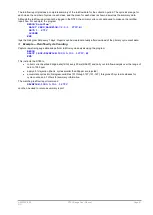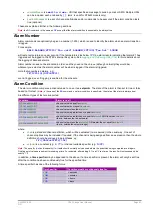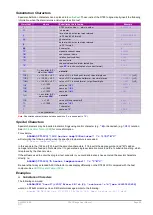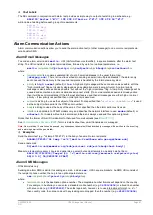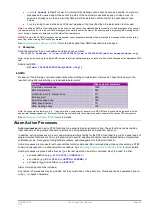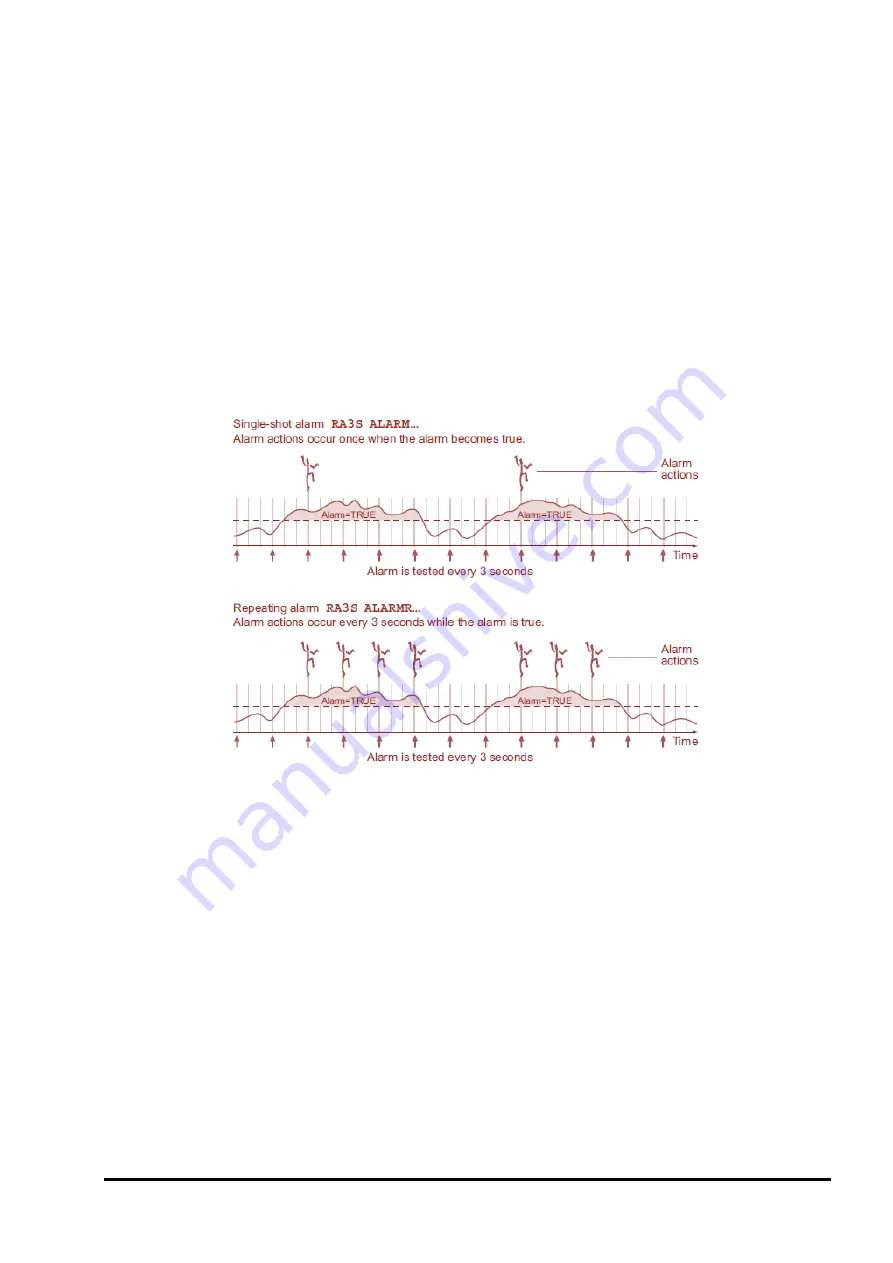
UM-0085-B09
DT80 Range User Manual
Page 82
RG
Part F – Alarms
Alarm Concepts
DT80
alarms
allow decisions to be made based on the magnitude of DT80 input channels, channel variables, timers, the
clock/calendar, internal channels, system variables and so on. The decision is a
true
or
false
result of an alarm
condition test
. The true/false result is also known as the alarm state.
The DT80 can be instructed to carry out actions when an alarm tests true. These actions can be setting the DT80’s
digital state outputs, issuing messages, or executing commands to change the DT80’s operation.
Alarm transitions can also be logged to the DT80's internal file system for later analysis.
There are two types of alarms:
•
single shot alarms (
ALARM
command) act once on the transition of the condition test from false to true
•
repeating alarms (
IF
and
DO
commands) act repeatedly each time the enclosing schedule runs, while the
condition tests true
Figure 20: Comparing single-shot and repeating alarms (3-second schedule example)
Alarm commands can be included in any report schedule, and are processed in sequence with other schedule processes
such as reading input channels and performing calculations.
Alarm Commands
The DT80 provides three main alarm commands, each with a similar basic syntax:
ALARM
n
(
test
)
digitalAction
"
actionText
"[
commsProcess
]{
actionProcesses
}
IF
n
(
t
est
)
digitalAction
"
actionText
"[
commsProcess
]{
actionProcesses
}
(
ALARMR
is also accepted as a synonym for
IF
)
DO
n
"
actionText
"[
commsProcess
]{
actionProcesses
}
where:
•
n
is the alarm number, used to distinguish logged alarms (optional)
•
test
is the
alarm condition
to test
•
digitalAction
is one or two digital output or CV channels which will follow the alarm state (optional)
•
"
actionTex
t
"
is a text string to output if the alarm condition tests true (optional)








